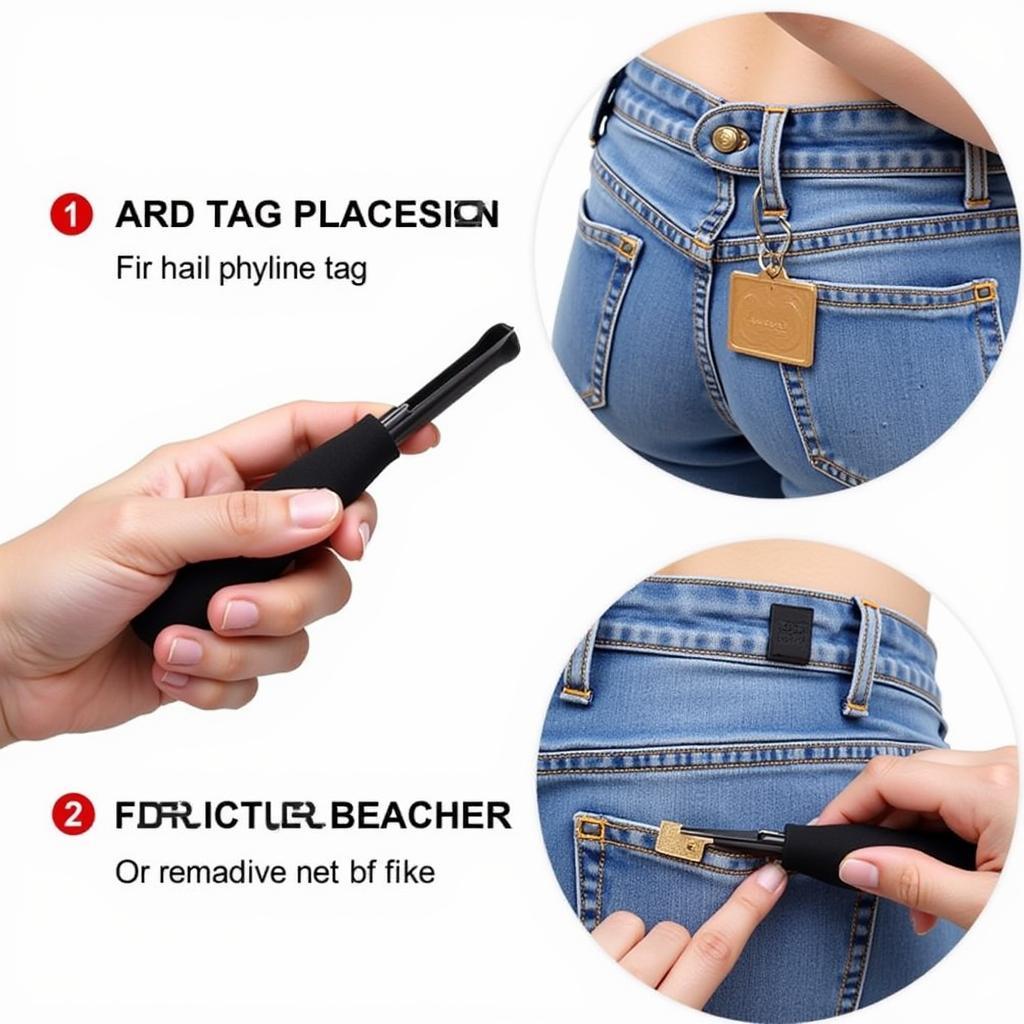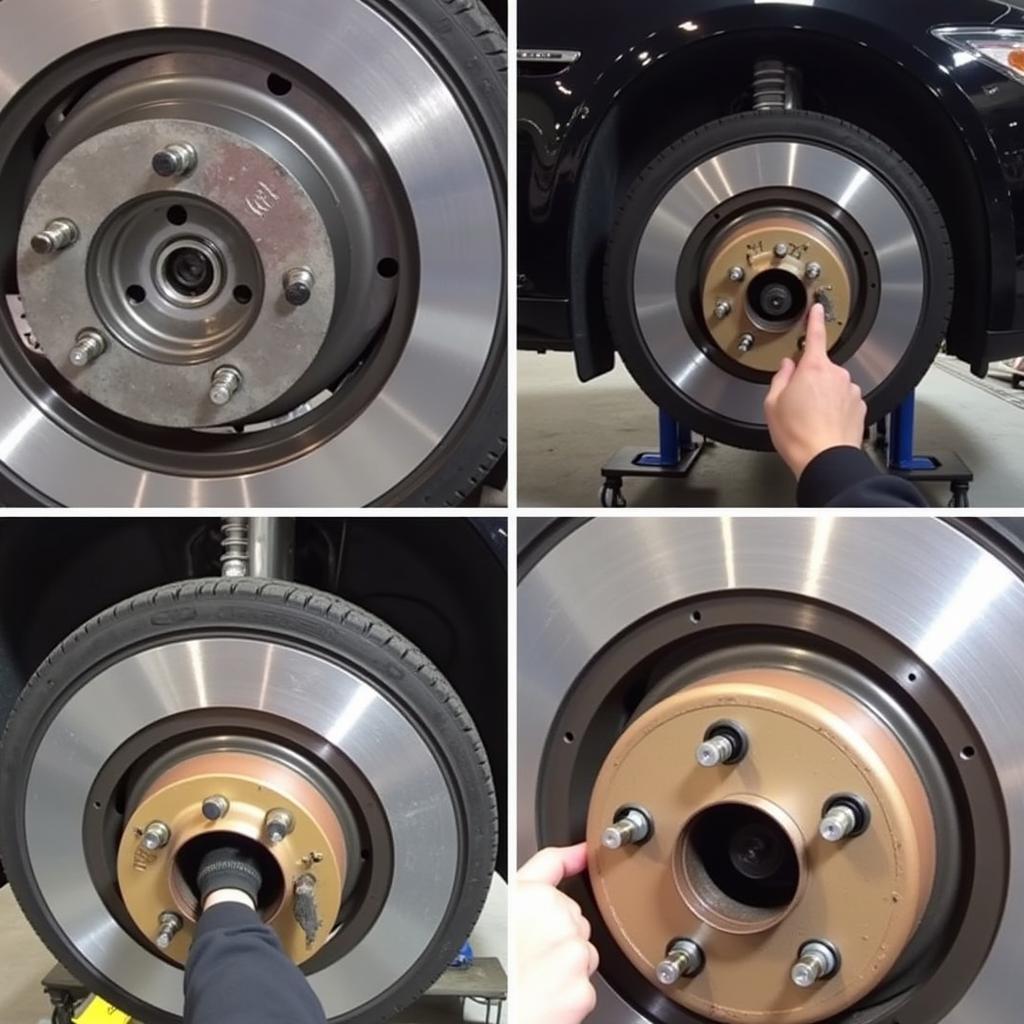Getting that pesky anti-theft tag off your purchased item can be frustrating. Whether it’s a clothing security tag, an ink tag, or a hard tag on electronics, knowing the right removal method can save you a trip back to the store and potential damage to your merchandise. This guide will provide you with effective strategies for safely removing various types of anti-theft tags, including information on professional help when needed.
Understanding Anti-Theft Tags and Their Removal
Anti-theft tags are designed to deter shoplifting, but sometimes they remain attached after purchase due to human error. Knowing the type of tag you’re dealing with is crucial for safe removal. Common types include hard tags, ink tags, and electronic article surveillance (EAS) tags. Each requires a different approach, and using the wrong method can damage the product or trigger the ink mechanism. If you find yourself needing to remove an anti-theft tag, understanding how your vehicle’s battery works can be helpful too, especially if it’s completely dead. Check out this article about sudden car battery failure for more info.
 Removing Hard Tags
Removing Hard Tags
Detaching Hard Tags
Hard tags are typically affixed to clothing or accessories. These often require a specialized magnetic detacher tool, commonly used in retail stores. If the store forgot to remove it, returning to the store for removal is the best option. Attempting to remove hard tags yourself without the proper tool can damage the item. If you’re determined to do it yourself, strong magnets might work, but proceed with caution. Start by understanding how the tag mechanism works. If your car has trouble starting, check out this link on what to do when your car has a battery but won’t start.
Dealing with Ink Tags
Ink tags contain a dye capsule that bursts if tampered with. These are trickier than hard tags and should be handled with extreme care. Never attempt to force them open. The best approach is to return to the store for professional removal. Tampering with ink tags not only ruins the merchandise but can also create a messy situation. Understanding the difference between a dead battery and a bad alternator can help you diagnose car issues. Check out more here: dead battery vs bad alternator.
Removing EAS Tags
EAS tags are commonly used on larger items and trigger an alarm at the store exit if not deactivated. These tags are usually deactivated at the checkout counter. If the tag wasn’t deactivated, going back to the store is the easiest solution. Attempting to remove or disable EAS tags yourself is generally not recommended and could be construed as shoplifting. Understanding why a car battery might not hold a charge is important for overall vehicle health. Find out more here: will a bad battery hold a charge.
Seeking Professional Help for Anti-Theft Tag Removal
If you’re unsure about how to get off anti theft tag, seeking professional assistance is always the safest and most reliable option. Returning to the store of purchase is the most straightforward approach. The staff has the right tools and experience to remove the tags without causing damage. They are also equipped to handle any potential issues, such as deactivated ink tags. If returning to the store isn’t feasible, some locksmiths and security professionals offer anti-theft tag removal services.
What to Do If You Accidentally Trigger an Ink Tag
If an ink tag bursts, try to contain the dye as much as possible. Blot the stain with a clean cloth, avoid rubbing, and contact the store immediately. They can advise on cleaning methods or offer a replacement item. Document the incident with photos and keep any receipts as proof of purchase.
“Never attempt to remove an ink tag yourself. The risk of damage to your item and the potential mess isn’t worth it,” advises John Smith, a Senior Loss Prevention Specialist with over 20 years of experience in retail security.
Preventing Anti-Theft Tag Issues in the Future
Always double-check your purchases at the checkout counter to ensure all tags have been removed. This simple step can save you the hassle and potential embarrassment of dealing with an active tag later. If you notice a missed tag, inform the cashier immediately. This will help you avoid accusations or assumptions about how to get off an anti-theft tag.
“Prevention is key. A quick check at the checkout can prevent a lot of headaches later,” adds Sarah Jones, a Retail Manager with 15 years of experience in customer service. She emphasizes the importance of customer vigilance in preventing these issues.
Conclusion: How to Get Off Anti-Theft Tag the Right Way
Knowing how to get off anti-theft tag safely involves understanding the type of tag, choosing the right method, and prioritizing professional help when needed. Returning to the store is always the safest bet, ensuring the item remains undamaged and avoiding any potential legal issues. For specific concerns related to Jeep Cherokee battery problems, you can find helpful information here: jeep cherokee dead battery symptoms. By following the advice in this guide, you can navigate the process effectively and protect your purchased items.
FAQ
-
Can I remove a hard tag at home? While possible with specific tools, it’s best to return to the store for safe removal.
-
What happens if I accidentally set off an ink tag? Contain the dye, contact the store immediately, and document the incident.
-
How can I avoid anti-theft tag issues? Always double-check your purchases at the checkout counter to ensure all tags have been deactivated and removed.
-
Are there professionals who can remove anti-theft tags? Yes, some locksmiths and security professionals offer this service.
-
What should I do if the store refuses to remove a tag I believe was deactivated? Remain calm, explain the situation, and provide proof of purchase.
-
Can I use a magnet to remove an EAS tag? It’s not recommended. EAS tags are deactivated electronically, and magnets won’t work.
-
Is it illegal to remove an anti-theft tag myself? While not always illegal, attempting removal without proper authorization could lead to misunderstandings and accusations of shoplifting.


